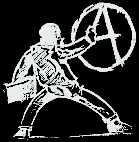|
|||||||||||||
Edition 1.1 Chapter 2: Selective Breeding and Domestic Organisms By Punkerslut
Section I: Selective Breeding One of the primary arguments against the theory of Evolution is the claim that the process of Natural Selection has never produced a new species. I have often heard, "Evolution has never been observed to cause extinction or new species." However, this claim is false, and any person would be able to see this, even if they had only a slight education of the expansive field of breeding. For thousands of years, mankind has been breeding and rearing domestic animals and crops. Typically, farmers or ranchers will breed those animals which are best outfitted for the harvesting purposes. As an example, a corn farmer will plant 100 crops, and once these crops are each equipped with seeds and the farmer is read to plant again, he will take 100 seeds from the tallest corn stalk, and plant them again. According to the laws of inheritance, these 100 new corn plants will be tall, and according to the laws of variation, these 100 new corn plants will also vary in height. Once the corn farmer has done this process for several years, an entirely new species of corn would have developed. This process is known as Selective Breeding. To quote Charles Darwin, "The key is man's power of accumulative selection: nature gives successive variations; man adds them up in certain directions useful to him. In this sense he may be said to have made for himself useful breeds." [*1] A great deal of our modern fruits and vegetables are often new species related to an older, inedible model. The pear, for example, was described by authors thousands of years ago as a fruit of inferior, inedible quality, but today it is sold by every grocery store. [*2] Wheat, as well, has been domesticated by mankind over the process of thousands of years. [*3] It is not difficult to find an improvement in the beauty of flowers, when we compare today's flowers to drawings of flowers from decades or centuries ago. [*4] Domesticated dogs rarely ever attack sheep or other domesticated animals, as this is seen in the instance of Sheep Dogs particularly, but when foreigners take undomesticated puppies from the natives of Tierra Del Fuego, the instinct to attack livestock and even humans. [*5] There remains little doubt among naturalists today that domesticated rabbits are descendants of wild rabbits [*6] To quote Charles Darwin, "In the case of strongly marked races of some other domesticated species, there is presumptive or even strong evidence, that all are descended from a single wild stock." [*7] In Britain, it was once shown that over the course of several years, the cattle have increased in weight and maturity, a beneficial factor to those who are in the slaughter business. [*8] Bakewell and Collins are also known for modifying their cattle through the process of Natural Selection. [*9] When two flocks of Leicester sheep were kept, one by Mr. Buckley and one by Mr. Burgess, after some time, an observer remarked that the sheep, "have been purely bred from the original stock of Mr. Bakewell for upwards of fifty years. There is not a suspicion existing in the mind of any one at all acquainted with the subject, that the owner of either of them has deviated in any one instance from the pure blood of Mr. Bakewell's flock, and yet the difference between the sheep possessed by these two gentlemen is so great that they have the appearance of being quite different varieties." [*10] To quote Darwin, "...to assert that we could not breed our cart- and race-horses, long and short-horned cattle, and poultry of various breeds, and esculent vegetables, for an unlimited number of generations, would be opposed to all experience." [*11] A quote by Charles Darwin...
Several decades after the death of Charles Darwin, Sigmund Freud writes, "...the breeding of domesticated animals flourishes." [*13] Thomas Malthus, a reverend of the 1700's, would describe what was very much common knowledge of that era, "Were it of consequence to improve pinks and carnations, though we could have no hope of raising them as large as cabbages, we might undoubtedly expect, by successive efforts, to obtain more beautiful specimens than we at present possess." [*14] In a longer section, he writes...
I again state, that the process of Selective Breeding must be admitted as a great evidence on behalf of the theory of Evolution. If organisms can change dramatically, into different races, species, or families, under the hand of mankind, then why is it so difficult to believe that it cannot happen in a natural state of things? The processes of Selective Breeding and Evolution are nearly identical, with the solitary difference being that the first happens with a human guide, while the second with nature as a guide. Thomas Henry Huxley describes the process of Selective Breeding as it occurs in the domestic dog...
With all of this evidence considered, I feel that there should be no doubt that Selective Breeding is an active form of Evolution, but simply under the hand of mankind. Section II: Conclusion The process of Evolution, when in the hands of man, has been clearly observed to create new species of organisms. Natural Selection, though, with wild organisms, seems to be much more thorough and accurate than civilization. Whereas humans will judge an organism and choose which to breed, nature -- or at least, the laws that govern the physical Universe -- will kill those organisms which are not fit for survival or capable of breeding. As far as the theory of Evolution explaining the Origin of the Species as they exist today, it would seem adequate with the evidence that can be attributed to Selective Breeding. However, while the processes of Evolution can be shown to be adequate, as in the case of Selective Breeding, is there any direct evidence that natural Evolution is responsible for the creation of organisms as they exist today? I shall proceed to answer this question in the following chapters. Punkerslut, Resources *1. Origin of the Species, by Charles Darwin, 1859, Sixth Edition, chapter 1.
|


